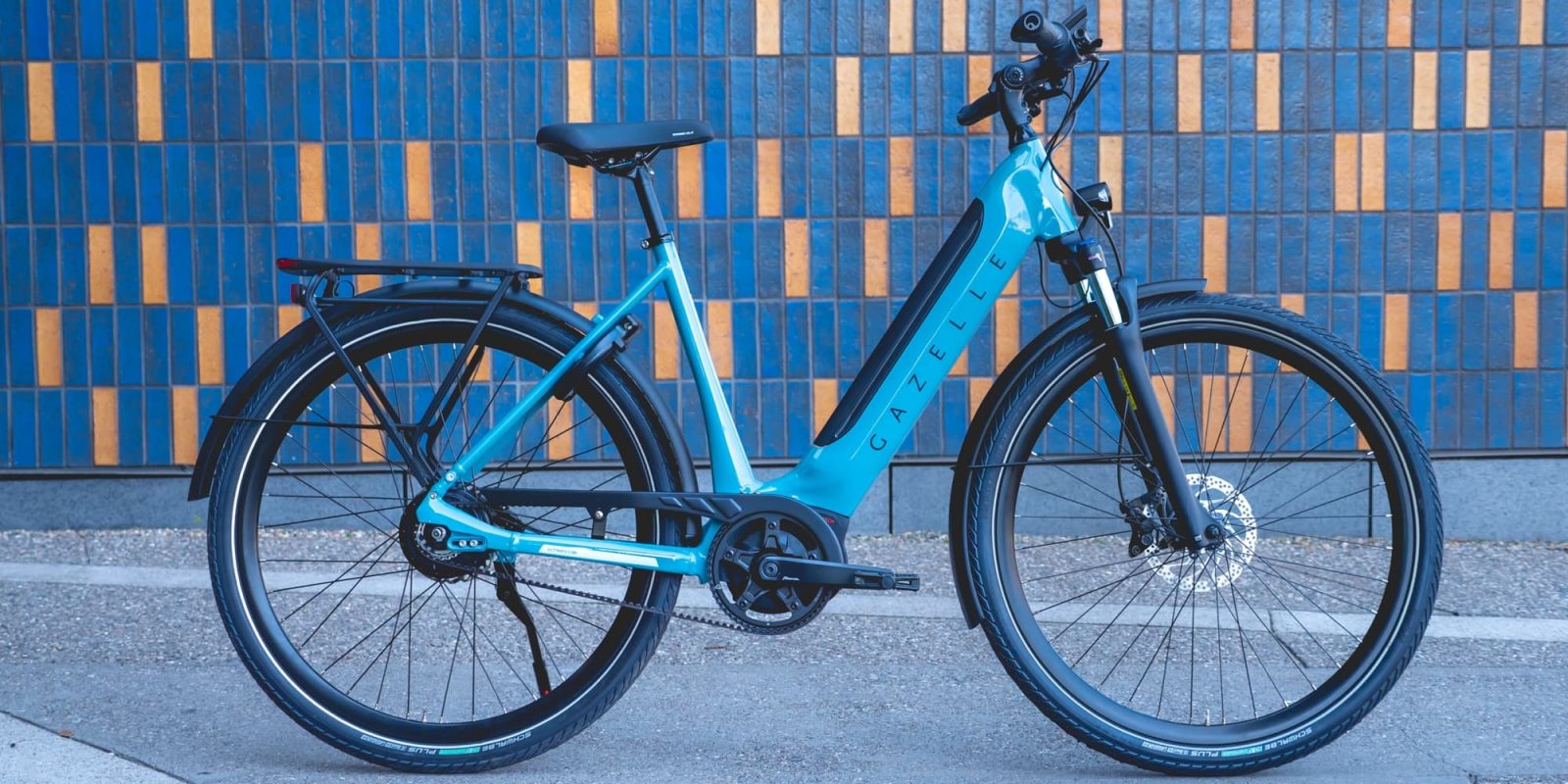
When it comes to design legacy, it’s hard to beat Gazelle Bikes. They’ve been building bicycles for over 130 years, making them one of the oldest bicycle manufacturers in the world. And so when the company invited me to come test out their electric bikes on Dutch home turf, I jumped at the opportunity.
Little did I know that I wouldn’t just learn about their high end bikes or see the famous “bicycle paradise” of Amsterdam – I’d soon come to experience something even more inspiring.
Gazelle’s e-bikes are quite literally all over the Netherlands, making up the single largest manufacturer in the country by far. Everywhere I went, I saw them.
Filling up bicycle parking garages and locked to just about anything on the street, they number in the millions.
The company has quite a diverse line, too. There are so many interesting models that it’s hard to count, and exploring their Experience Center at their factory in Dieren, Netherlands proved it.
The sense are flooded with so many good-looking Dutch bikes that it’s hard to make sense of it all, which is why the best way to get my bearings proved to be throwing a leg over the bikes and going for a ride.
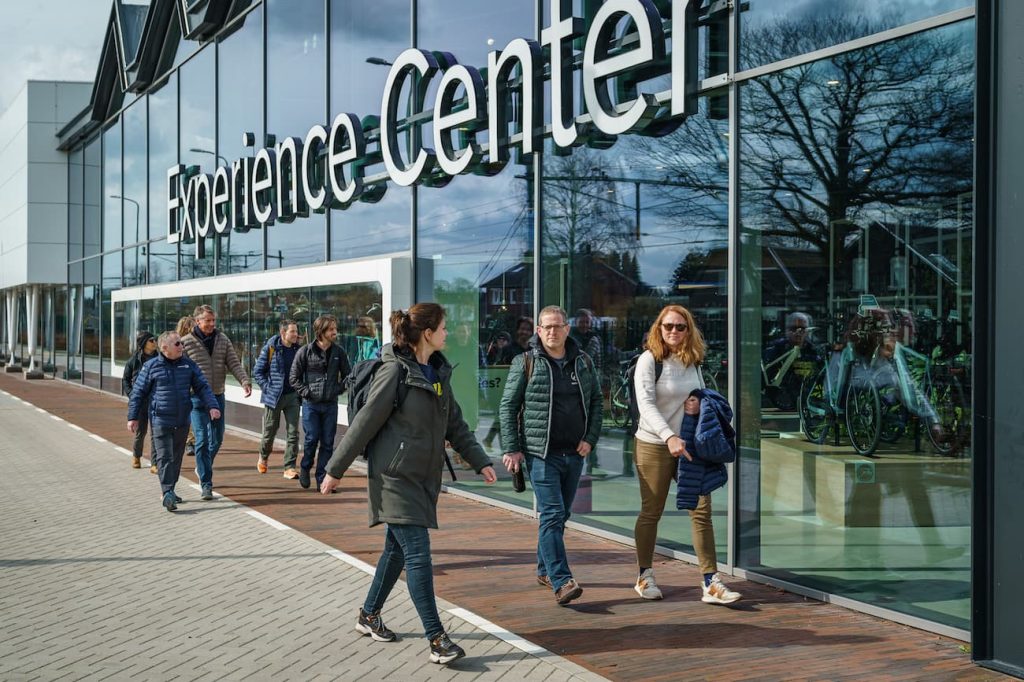
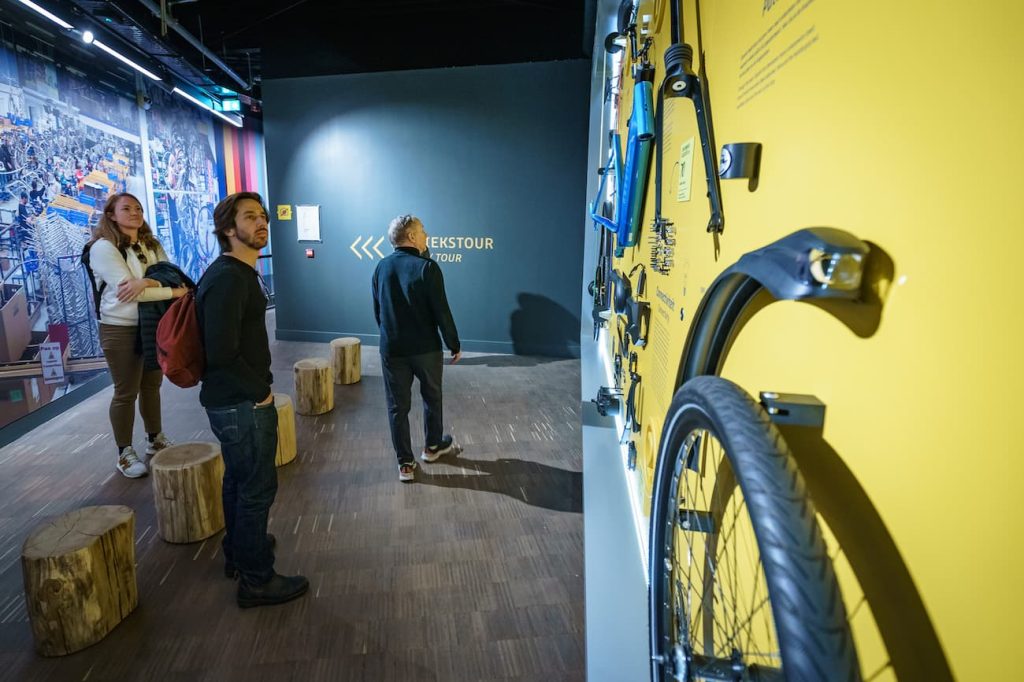
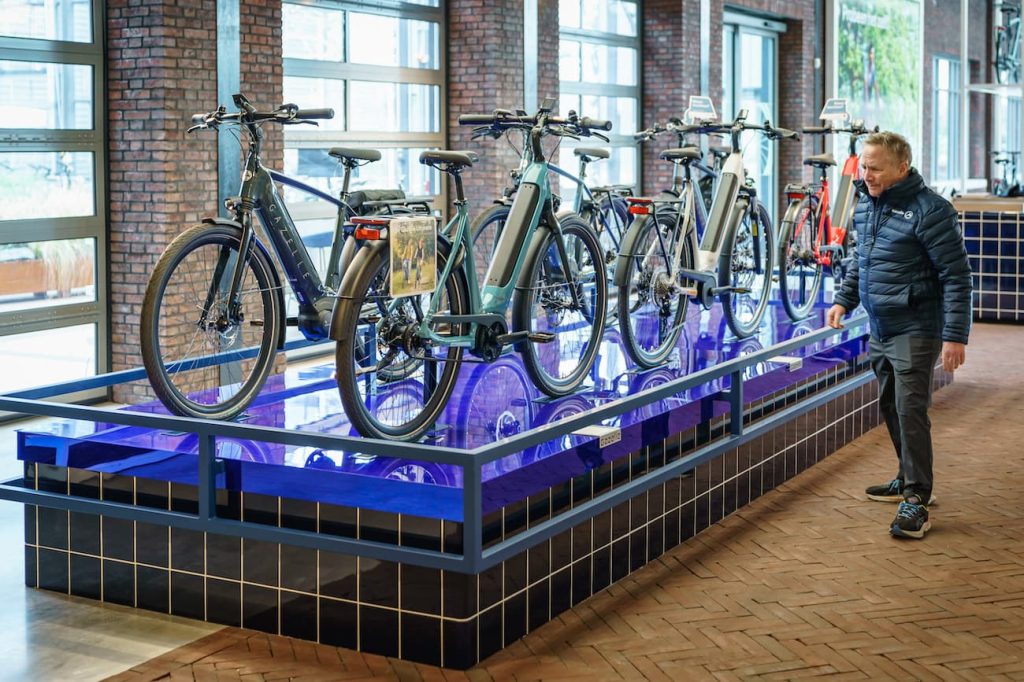
I was able to test many of the recently released 2023 Gazelle models, and it was an eye-opener.
Sure, we have nice e-bikes from high-end brands in the US. But the budget-friendly models that ship direct-to-consumer tend to get a lot of the local attention in North America, and especially for new riders who are hesitant to pay top dollar for top e-bikes.
But in the Netherlands, where I saw first hand how many people treat their e-bikes like true car-replacers, a nicer electric bike is practically a requirement.
Check out what I mean in my video below, but don’t forget to keep reading for the full story.
Gazelle’s bikes are of course built with the typical Dutch know-how that comes from decades of dedicated bike commuting.
From the internally geared rear hubs that make it easy to shift (even at a stop) without a maintenance-prone derailleur, to the ample storage from racks and baskets, and even features like LED lighting built right into the commuter-spec fenders to reduce the number of protruding components, everything is obviously thought out for the type of rider that relies on an e-bike as a daily-driver type of vehicle.
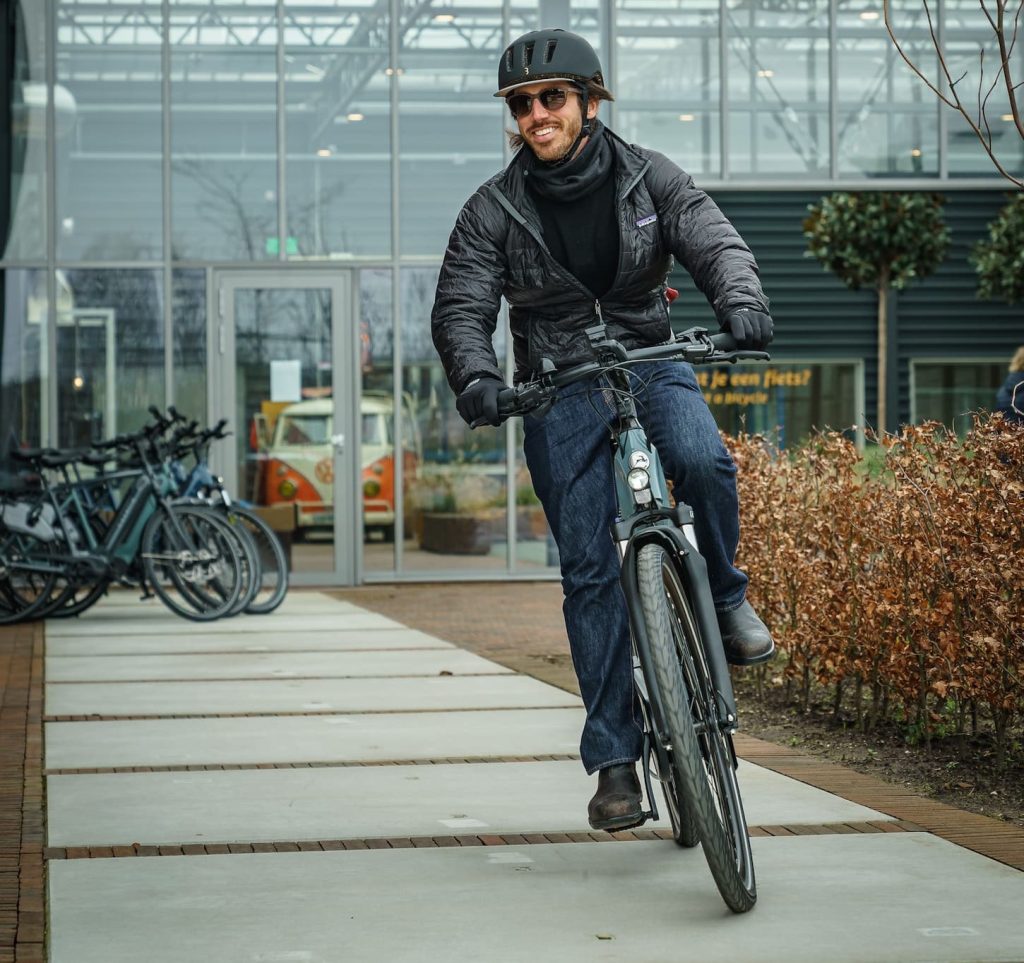
And that’s exactly the type of rider you’ll find in the Netherlands, which is why when Gazelle brought its e-bikes to the US a few years ago, they targeted riders that go beyond a mere recreational device for infrequent rides.
Gazelle’s e-bikes bring a level of ruggedness and comfort that we don’t often see on e-bikes in the US. That’s because they weren’t designed for the average US rider, but rather they were designed for people who use them day in and day out, 365 days a year. In other words, they were designed for the Dutch. But as Gazelle expands its North American reach, those features make them ideal for a new wave of North American riders that are embracing the car-replacing properties of e-bikes.
As true Dutch bikes, you’ll find all the telltale cues on these two-wheelers. There’s the upright seating position that gives a comfortable posture with excellent view of the road. It’s something that I experienced on multiple models and makes a big difference when you’re riding every day.
There are the included racks, fenders, and LED lighting that have become a necessity for anyone who uses an e-bike as a daily commuter or utility vehicle.
There are the deep step-through frames on many models that make it easy to hop on and off the bike, even when loaded down with multiple pannier bags or cargo boxes.
And then of course there are the fancier features on many models, like Gates carbon belt drives for smooth, maintenance free drivetrains and Enviolo automatic shifting with a stepless hub for the easiest transmission you can imagine.
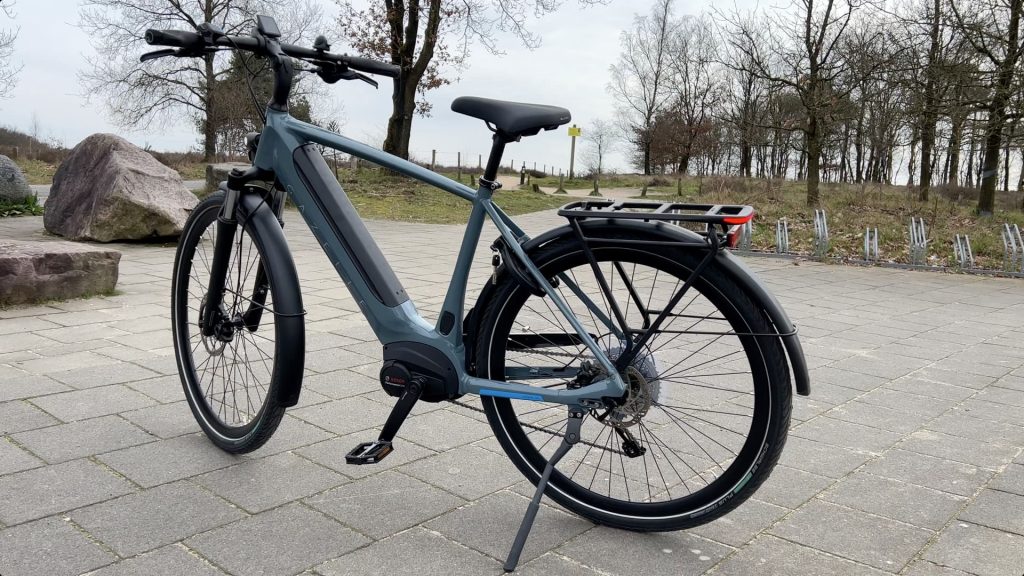
I expected to find a lot of this type of stuff, as that was the reason I went to Amsterdam in the first place. But what I didn’t expect was to learn was just how much the design of Dutch-style bicycles goes hand in hand with the design of Dutch cities to emphasize the role of bikes and simultaneously de-emphasize car use.
In major cities like Amsterdam, Utrecht and others, many of the roads are bike priority roads. That means bike’s don’t share the road with cars – they own the road. Cars are the guests. In fact, those words are literally painted onto the street in official signage declaring that “cars are guests.”
Many roads are even off limits to cars, making them purely for bikes and other small forms of two and three-wheeled transportation.
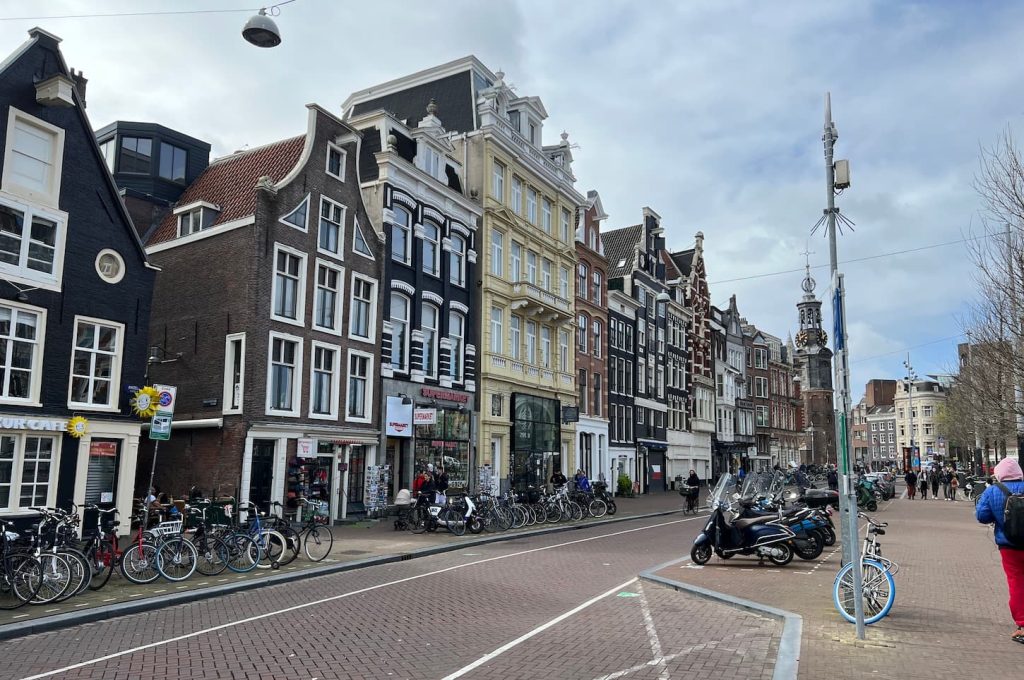
The Dutch have designed their cities to make people want to cycle instead of drive. Parking is easier because there is bicycle parking literally everywhere. Not only on the street, but also in massive bicycle parking garages underground. We even visited the sprawling 12,500-space bike parking garage in Utrecht, complete with its own bicycle highway running right down the middle of it. I call it “sprawling,” but ironically it doesn’t even take up that much public space, since bicycles simply aren’t very big.
And that’s kind of the point. The whole idea here is that bicycles are space efficient. They don’t take up more of the city than they have to, since that’s not the point of a vehicle. Unlike North America, which has built its cities around cars, the Netherlands has built its cities around people.
Bikes are just a tool for transportation. They’re easy to use, easy to store, and don’t clog up cities or public space that is better used by the people. Instead, you’ve got restaurants, cafes, parks, and shops that spill out in the public space. There are no giant parking lots robbing the city of useful land, instead you have beautiful canals and vibrant public squares.
With the inclusion of bicycle highways between cities, two-wheelers have become even more than just city transport. Many people commute with their e-bikes, though train commutes followed by bikeshares to get to and from the train station are perhaps even more popular for longer distance commutes.
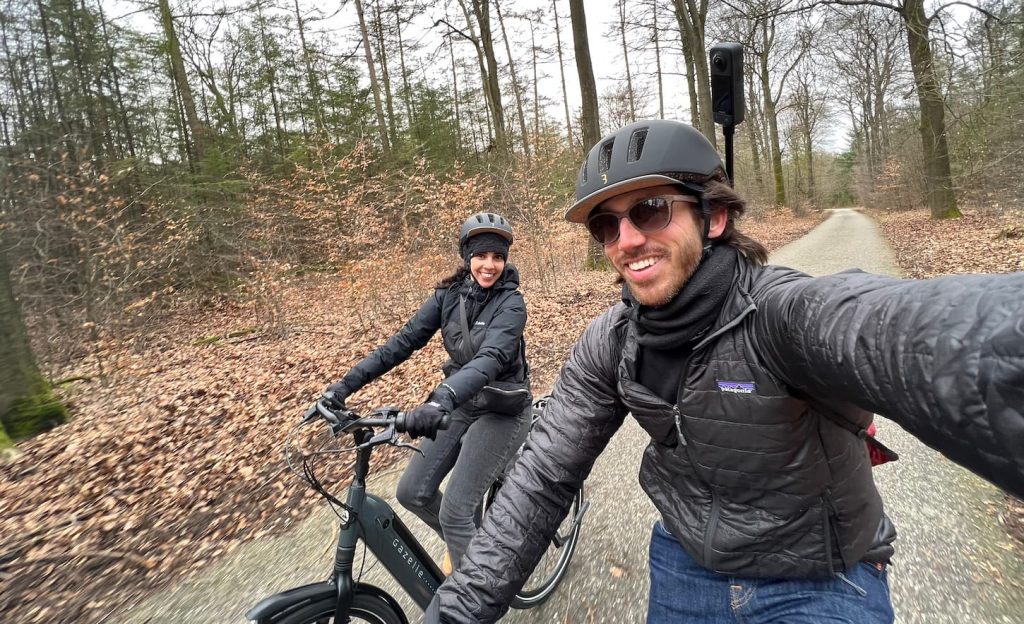
The way the Netherlands designed its cities is all about its public space and the way it better serves its residents.
To me, that was one of the most surprising things that I learned from visiting the country. I thought I’d come to see a bicycle paradise in Amsterdam. And in a way, I did. But more than that, what I really saw was an entire country that has designed itself to better serve its citizens.
That doesn’t mean designing around bikes, but rather designing around people. Bikes were just the best way to do that, providing clean and efficient tools that don’t have the downsides of cars (whether electric or combustion engine-powered).
When combined with robust public transportation, few people living in Dutch cities have any need to own a car.
Top comment by Tom Power
I lived in The Netherlands 2007-2009 and I agree that everything is designed around people with bikes a huge component of that. It was just fantastic. Such a fun way to get around and you can get EVERYWHERE. And no training wheels for kids, just balance bikes - so much better
It’s a model that can be used around the world, and is in fact already being duplicated. Many cities and countries around their world send representatives to the Netherlands to learn from the Dutch, and there’s even a Dutch Cycling Embassy that serves as a center of ambassadors to help other countries learn its ways.
We often hear naysayers dismiss this Dutch model, saying it only works due to the flat terrain of the Netherlands or the weather. And yet I saw a combination of pedal and electric bikes (which can flatten hills with ease anywhere in the world thanks to their motor assist), not to mention all the Dutch folks that seem fine pedaling head first into the hail storm I witnessed. When cycling has become so engrained into the culture, a bit of rain isn’t as big of an issue. The same way you put on a raincoat when you walk in the rain, the Dutch put one on to cycle in the rain; some of them even ride a bike while holding an umbrella!
The bigger message is that the Dutch haven’t found some secret. They’ve simply embraced a better and more effective form of transportation from a top down approach, providing funding and infrastructure that has allowed bikes to permeate the culture. Cars still exist, they aren’t gone. But they have been squeezed out of busier city centers to the point where they almost look strange when they rumble by.
It’s not magic, it’s policy. It’s culture. It’s priorities. The Dutch have figured it out, and they’re happy to share it. The rest of us just have to listen.
FTC: We use income earning auto affiliate links. More.



Comments